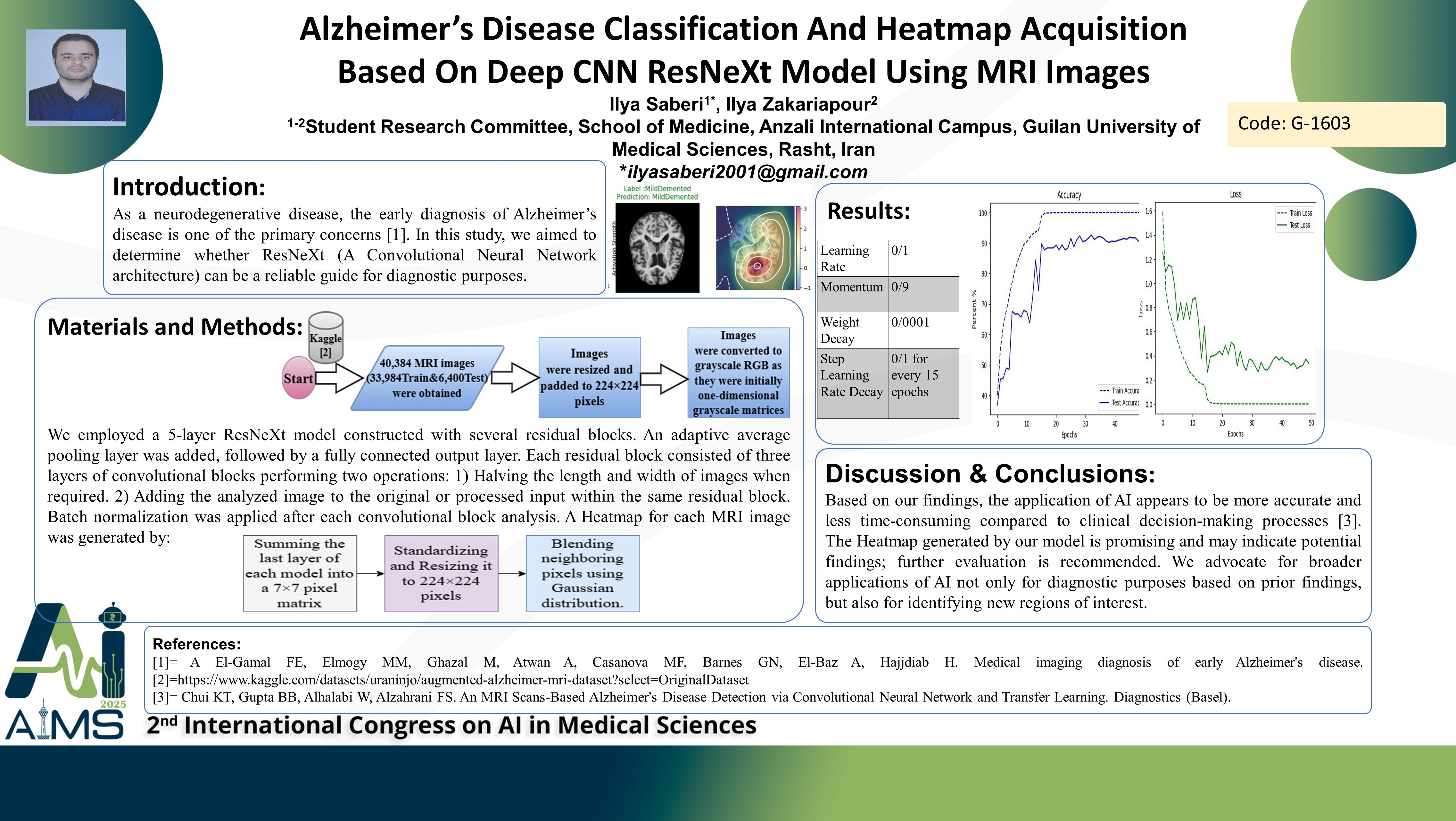Alzheimer’s disease classification and heatmap acquisition based on Deep CNN ResNeXt model using MRI images
Code: G-1603
Authors: Ilya Saberi *, Ilya Zakariapour ℗
Schedule: Not Scheduled!
Download: Download Poster
Abstract:
Abstract
Background and Aims: As a neurodegenerative disease, the early diagnosis of Alzheimer’s disease is one of the primary concerns. In this study, we aimed to determine whether ResNeXt (a convolutional neural network architecture) can be a reliable guide for diagnostic purposes. Method: To conduct the study, a total of 40,384 MRI images (33,984 for training and 6,400 for testing) were obtained from a dataset on Kaggle. All images were resized and padded to 224×224 pixels, and test images were converted to grayscale RGB as they were initially one-dimensional grayscale matrices. We employed a 5-layer ResNeXt model constructed with several residual blocks. An adaptive average pooling layer was added, followed by a fully connected output layer. Each residual block consisted of three layers of convolutional blocks performing the following operations: halving the length and width of images when required and adding the analyzed image to the original or processed input within the same residual block. Batch normalization was applied after each convolutional block analysis. A heatmap for each MRI image was generated to guide us through potential hotspots. This was achieved by summing the last layer of each model into a 7×7 pixel matrix, standardizing it, resizing it to 224×224 pixels, and blending neighboring pixels using Gaussian distribution. The model was trained using a stochastic gradient descent optimizer with a learning rate of 0.1, momentum of 0.9, and weight decay of 0.0001. A step learning rate decay of 0.1 was applied every 15 epochs, with the model trained for a total of 50 epochs. Results: A test accuracy of 90% and training accuracy of 100% were achieved, with a total training time of 2 hours. Conclusion: Based on our findings, the application of AI appears to be more accurate and less time-consuming compared to clinical decision-making processes. The heatmap generated by our model is promising and may indicate potential findings; further evaluation is recommended. We advocate for broader applications of AI not only for diagnostic purposes based on prior findings, but also for identifying new regions of interest.
Keywords
Alzheimer’s disease, ResNeXt, AI, CNN, MRI
